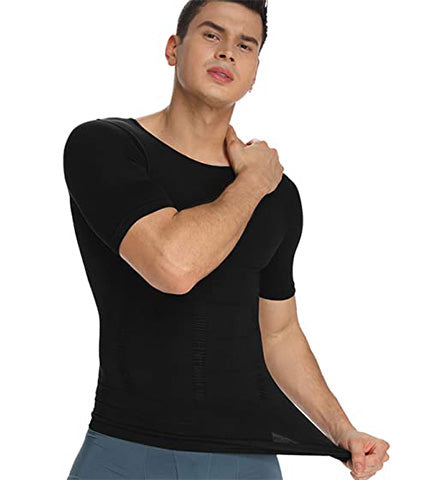Blog
Finding the Right Chest Binder For You
For many people wearing an FTM chest binder, a compression tank top is one of the best options for achieving a masculine chest or flattened chest look. By wearing a compression garment such as this, FTM individuals and trans men can feel more comfortable with their outward appearance, or rather, reduce their body dysphoria. Having large breasts or a non-masculine chest can make it harder to feel like a male, which can lead to discomfort, especially for trans teens. Some teens want to skip the chest binders and have FTM top surgery, which can have adverse effects post-surgery for teens younger than 18. Remember, teens’ bodies are still growing. As a result, any form of plastic surgery early on can produce unwanted results later on. The good news is there is no rush to operate, even if you are older than 18.

Chest binding is a safe alternative that can help ease you into FTM top surgery. That said, there are compression tank tops, body compression suits, and other clothing items similar to a compression garment for tummy tuck or post-surgery procedures. Thus, you have some great options to choose from when looking for a chest binder garment. Looking specifically at FTM binder compression tank tops, there are several options. Nevertheless, it doesn't matter so much which kind of chest binder top you choose. Rather, what matters most is wearing the compression garment correctly and finding the right fit. Thus, to better assist you, let's go over how to find the right tank top and wear it.
The Right Fit for your Chest Binder
Typically, one of the easiest ways to get a feel for which chest binder or compression tank top will work best for you is, first, to recall your old bra size. There is a convenient bra-to-chest size converter tool online that can provide you with fairly accurate measurements. Of course, if you were more of a tomboy or not too big on top, so you never wore a bra previously, then you can use the tried and true method—measuring yourself. This means taking a snug measurement of the broadest area of your chest with a tape measure. Once you have written that number down, next, you need to measure underneath your chest. Then, you simply add them together and divide by 2. Note that much like your jeans size, this number may vary slightly depending on the brand, etc. But then, overall, this should give you a better idea of where to start when looking for a compression garment. You will most likely need to try a few brands before finding the FTM binder or compression garment you like.
How to Safely Bind or Put on a Compression Tank Top
After finding the right fitting binder, make sure you know how to put it on correctly. Though binding may be something you have done in the past or are used to doing, wearing a compression garment is a little different. For starters, there is a specific way to put your garment/tank top on. Remember, this is no ordinary tank top, i.e., you can't just stick your head and arms in it. Instead, you need to turn your compressor garment inside out and upside down. Next, step into the garment and pull the bottom part up to your waistline. Still, inside out and upside down, use the tank top sleeves to pull up the shirt until you can easily put your arms into the sleeve holes. Once on, you can make any necessary adjustments to make the compression garment more comfortable to wear or achieve the overall desired look. Many people choose to leave the bottom portion of their tank top folded under to prevent the chest binder from rolling up throughout the day.

Chest Binding Tips
Compression tank tops are not cheap, but we promise it is better to buy a chest binder or compression garment of some kind rather than attempting to do it yourself—do not use ace bandages or strong adhesive duct tape. With that said, your non-DIY binder/tank top should obviously be slightly form-fitting, but within reason. If you are having difficulty breathing or feel extremely uncomfortable, you need to make the necessary adjustment to your compression garment. Besides ensuring that you can breathe easier, there are several tips that make wearing a chest binder a little easier. For instance, some people choose to wear a light shirt underneath for less of a restrictive feel and to prevent possible chaffing. Moreover, layering, in general, is recommended if you are looking for a completely smooth or flattened appearance. Other tips include adding a little cornstarch to help reduce skin irritation and to keep the compression top from retaining too much sweat. You can also wear these tank tops when swimming. Just be aware that the fit might feel different until the body compression suit is washed and worn again. If you are not a fan of wearing chest binders all the time, then you should try to alternate between them and compression sports bras. Along those same lines, do not wear binders for more than 8-10 hours a day or double up. Note that compression binders are not considered medical devices.
Final Note
Chest binders, FTM tank tops, and compression garments are just a few ways to ease the FTM transition process. If the end goal is to have FTM surgery in the future, that is a decision only you can make for yourself. That being said, if you are a trans teen under the age of 18 who is considering FTM surgery, or starting to develop a sense of body dysphoria, you should definitely speak with someone to figure out the best course of action moving forward. Ultimately, chest binding is a great way to reduce negative feelings you may be experiencing due to your physical appearance. Find the right size and feel the difference that wearing a compression tank top makes


